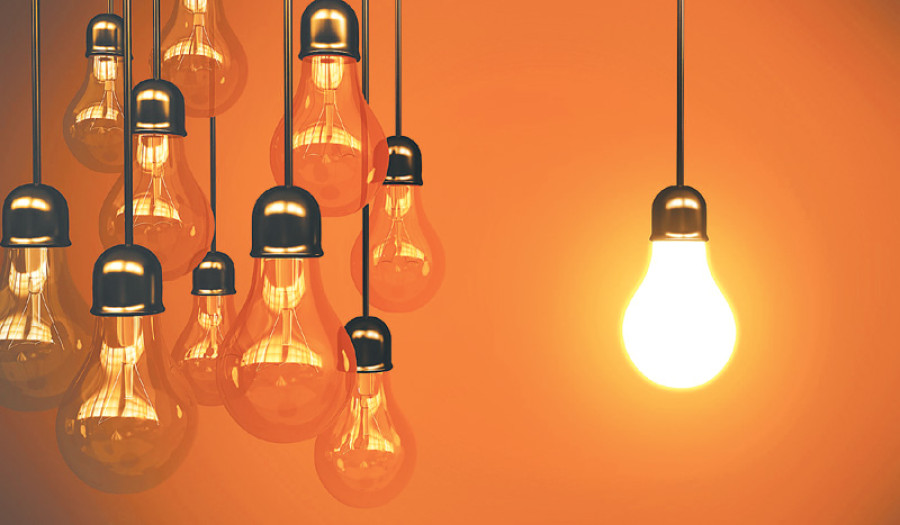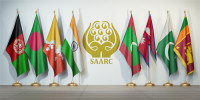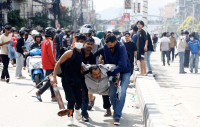Opinion
Devolving power
In the 1990s, the power sector in most of the developing countries sought to liberalise its market, one of the major reasons being the lending policies of international financial institutions like the World Bank and the International Monetary Fund that internalised the idea of market liberalisation.
Subrata Lamsal
In the 1990s, the power sector in most of the developing countries sought to liberalise its market, one of the major reasons being the lending policies of international financial institutions like the World Bank and the International Monetary Fund that internalised the idea of market liberalisation. Nepal being no exception adopted the Hydropower Development Policy (HDP) and Electricity Act (EA) in 1992 to ease this process of liberalisation.
EA 1992 sought to liberalise electricity generation, transmission and distribution as a whole, thereby ending the monopoly of Nepal Electricity Authority (NEA). However, due to the absence of necessary regulations, it ended up creating a Single Buyer Model (SBM) instead of unbundling NEA. In fact, NEA started to act both as the buyer and the producer of electricity and thus, an Integrated SBM (ISBM) was created. Thereafter, a vertically integrated entity like NEA bought electricity from Independent Power Producers (IPPs) as well as continued generating electricity on its own. All in all, ISBM aspired to increase private investment, thereby decreasing NEA’s burden of meeting power demands without having to change its fundamental organisational structure.
Not working
EA 1992 was adopted to ease private sector participation in the power sector as a whole. Private participation in transmission and distribution of electricity has not yet been achieved as anticipated because of the absence of regulations on land ownership, wheeling charges, dispute settlement and so on. The electricity generation sector had been opened up for private investors under the existent ISBM—which purported to deal with the supply side constraints. On the flipside, however, IPPs are compelled to sell generated electricity to NEA and not in an open market. Since, NEA is also a generator, it favours its own production over the production from IPPs, thereby restricting the latter’s access to the supply network which is owned by NEA. This discourages the formation of a level playing field and a competitive market for IPPs.
Despite the adoption of act and policies to liberalise the power sector through IPPs, there is an imbalance between demand and supply of electricity in Nepal, where during the dry season power cuts rise up to 16 hours a day. The increase in the number of consumers from 2.83 million to 2.97 million against the total energy availability increase by 1.89 percent in 2016 has widened the gap. Also, the decrease in Power Purchase from IPPs by 7.55 percent compared to the purchase in the year 2014-15 has worsened the condition.
Empirical evidence shows that SBM hinders competition in the long run and increases corruption and liabilities in the monopoly. The long term Power Purchase Agreements (PPA) (mostly 25-30 years) entered into by NEA and IPPs are mostly governed by take or pay clause (TPC) where NEA is obligated to buy the power generated by IPPs irrespective of its dispatching ability. Since most of the hydropower in Nepal are Run of River (RoR), they have minimal storage capacity; this alongside the TPC increases NEA’s loss as it has surplus production during the wet season (both from IPPs and its own) and minimal production in the dry season when electricity demand is at its peak. Furthermore, the difference in price paid under PPA to foreign IPPs (in US dollars) and Domestic IPPs (in Nepali rupees) and the cross subsidised consumer tariff has worsened the already weak financial condition of NEA. This has distressed NEA further rather than ease its functioning through power sector liberalisation—the purpose of the adoption of EA 1992.
Way forward
Ownership unbundling of the power sector could be an option, where the generation and supply sector is completely detached from the network (that is transmission, which in theory and practice is a natural monopoly even in developed countries given the amount of investment required to build the infrastructure). However, empirical evidence from a country like Netherlands shows that such unbundling has not made much difference. If the cost of introducing such unbundling is calculated against its benefit, it would be too high, especially for a small power sector in a financially struggling economy like Nepal’s.
Therefore, considering Nepal’s political instability, financial situation and so on, it would be wise to switch to a model where NEA is completely detached from the production sector, such that IPPs compete against each other in the production sector and have non-discriminatory access to the network. Meanwhile, the state owned entity could continue developing and expanding transmission networks, given its ability to secure funding and loans from international financial institutions. This would work towards increasing the generation of electricity while dealing with the probable problem of congestion arising from limited network availability. Likewise, it would be economically wise to allow IPPs to sell their electricity to third parties like small and large industries, in case of a generation surplus, through the use of existent networks by levying a standard fee for using the networks.
To this end, it is imperative to amend the existing EA 1992 in terms of detaching NEA from the production sector completely and ending the ISBM. Further, given the size and structure of Nepal’s power sector, a fully liberalised production sector would increase competition as well as incentivise private parties to develop better power storage facilities. Later when the power sector becomes more robust, the supply sector could be liberalised as well. However, it is imperative to internalise the fact that in a hydropower-based small power sector of a politically volatile and financially distressed economy like Nepal’s, the restructuring of the power sector should be wisely calculated, instead of directly emulating successful restructuring measures from around the world.
Lamsal is an LLM candidate in Energy and Climate Law at the University of Groningen, the Netherlands




 19.12°C Kathmandu
19.12°C Kathmandu










